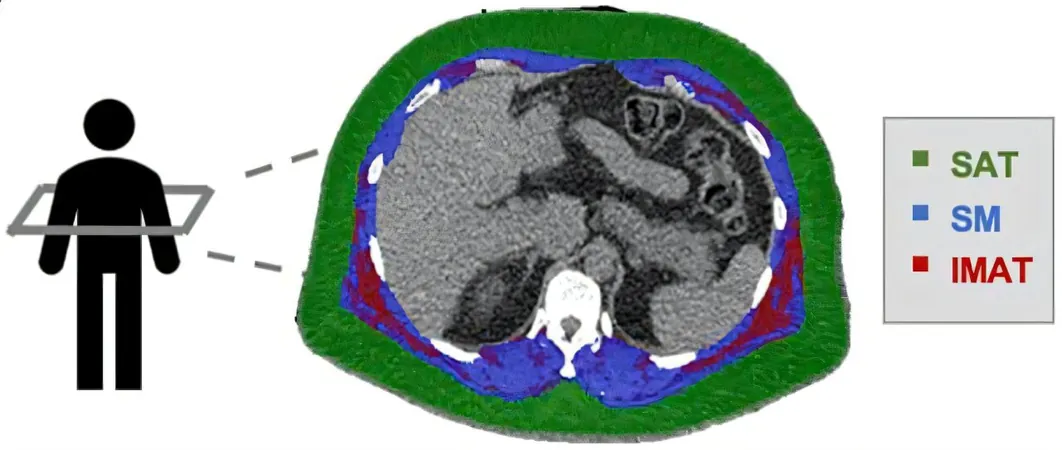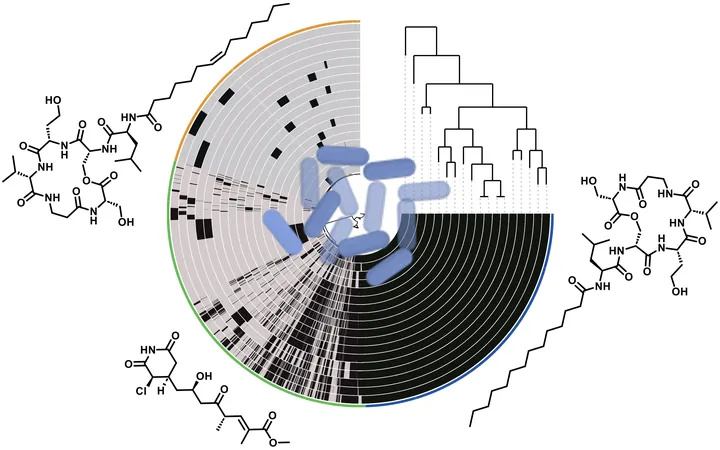
Hidden Fat in Muscles Could Spell Disaster for Heart Health, Study Finds!
2025-01-20
Author: John Tan
Groundbreaking Study Unveils Shocking Connection
A groundbreaking study published in the European Heart Journal has unveiled a shocking connection between hidden pockets of fat within muscles and an increased risk of severe heart disease, regardless of an individual's body weight. This 'intermuscular' fat—previously underestimated—has now been shown to significantly elevate the likelihood of hospitalization or death from heart attacks and heart failure.
Professor Taqueti's Insights on Obesity and Heart Health
The lead researcher, Professor Viviany Taqueti, who heads the Cardiac Stress Laboratory at Brigham and Women's Hospital and teaches at Harvard Medical School in Boston, stated, "Obesity has emerged as one of the top global health threats to cardiovascular systems. Yet, conventional metrics like body mass index (BMI) fall short when it comes to accurately assessing heart disease risks across diverse populations." This new investigation sheds light on why these traditional measurements can be misleading, especially in women, where higher BMI might reflect less harmful fat types.
Details of the Study
In this pioneering study involving 669 participants, all being evaluated for chest pain and shortness of breath, Professor Taqueti and her team conducted advanced cardiac imaging techniques, including PET/CT scans, to gain insights into their heart function. Additionally, CT scans were utilized to assess body composition, revealing the quantity and distribution of fat and muscle in each individual's torso.
The Fatty Muscle Fraction
Remarkably, the researchers created a measurement called the "fatty muscle fraction," which quantifies the ratio of intermuscular fat relative to total muscle and fat. Over an average follow-up period of six years, it was discovered that individuals with higher fatty muscle fractions not only exhibited damage to their heart's microvascular system but were also at greater risk of serious heart conditions.
Impact on Coronary Microvascular Dysfunction
For every 1% hike in fatty muscle fraction, the risk of coronary microvascular dysfunction (CMD), which negatively affects blood flow to the heart, surged by 2%. Even more alarming, each percentage increase corresponded with a staggering 7% rise in the prospect of future heart-related events—independent of other known risk factors, including BMI.
Risks Associated with Intermuscular Fat
Of particular concern, patients who possessed both elevated intermuscular fat and signs of CMD faced a dire outlook—higher odds of heart attacks, heart failure, and mortality compared to their counterparts with healthier muscle compositions. Notably, the study found that subcutaneous fat, or fat stored just under the skin, did not present such risks.
Implications of Intermuscular Fat
Professor Taqueti elaborated, "Intermuscular fat may exacerbate inflammatory responses and disturb glucose metabolism, leading to conditions like insulin resistance and metabolic syndrome. These chronic issues can cause significant damage to blood vessels, including those linked to heart health." With this revelation, the research opens new avenues to identify high-risk individuals effectively, pushing the boundaries of conventional weight assessments.
Future Research Directions
Despite this promising step forward, questions remain unanswered about how individuals with excessive muscle fat can mitigate their risk. Treatments, including new weight-loss therapies, could potentially affect fat distribution in muscles compared to other body fat and lean tissues.
Investigating Treatment Strategies
Professor Taqueti and her team are now investigating various treatment strategies, including exercise, dietary modifications, and medical interventions, to ascertain their impacts on body composition and heart disease risks.
Expert Commentary on the Study
Dr. Ranil de Silva from Imperial College London commented on the study’s implications, emphasizing the intricate relationship between obesity and cardiovascular health. He urged for further quantitative research to establish how markers of fat distribution can refine cardiovascular risk assessments and benefit patients facing these significant health challenges.
Conclusion and Call to Action
This study serves as a wake-up call, urging us all to look beyond the number on the scale. Understanding that hidden fat can be just as detrimental, if not more so, than visible fat is crucial for safeguarding heart health in today’s society. So, could your muscular fat be hiding a ticking time bomb for your heart? It’s time to dig deeper!



 Brasil (PT)
Brasil (PT)
 Canada (EN)
Canada (EN)
 Chile (ES)
Chile (ES)
 Česko (CS)
Česko (CS)
 대한민국 (KO)
대한민국 (KO)
 España (ES)
España (ES)
 France (FR)
France (FR)
 Hong Kong (EN)
Hong Kong (EN)
 Italia (IT)
Italia (IT)
 日本 (JA)
日本 (JA)
 Magyarország (HU)
Magyarország (HU)
 Norge (NO)
Norge (NO)
 Polska (PL)
Polska (PL)
 Schweiz (DE)
Schweiz (DE)
 Singapore (EN)
Singapore (EN)
 Sverige (SV)
Sverige (SV)
 Suomi (FI)
Suomi (FI)
 Türkiye (TR)
Türkiye (TR)
 الإمارات العربية المتحدة (AR)
الإمارات العربية المتحدة (AR)